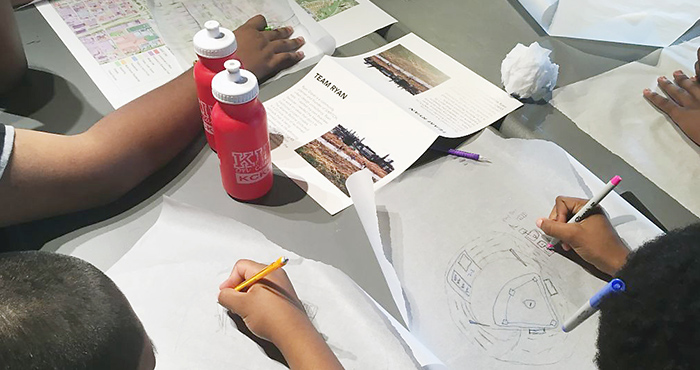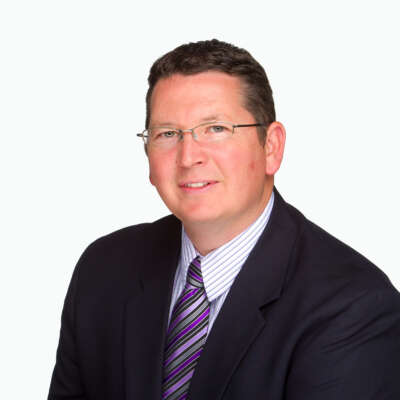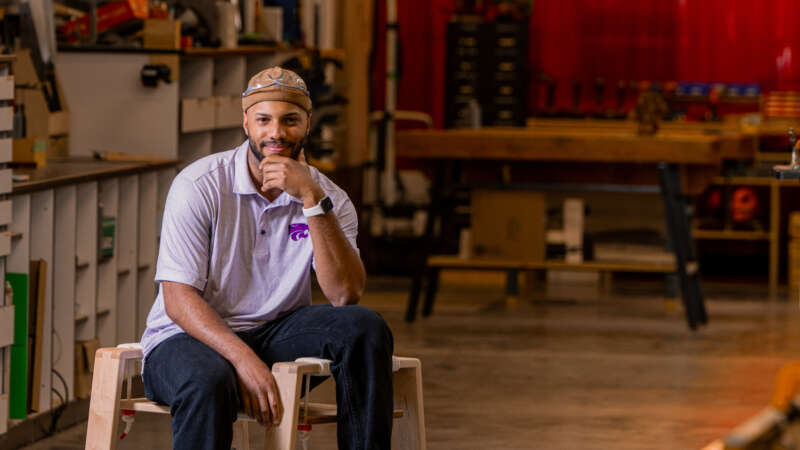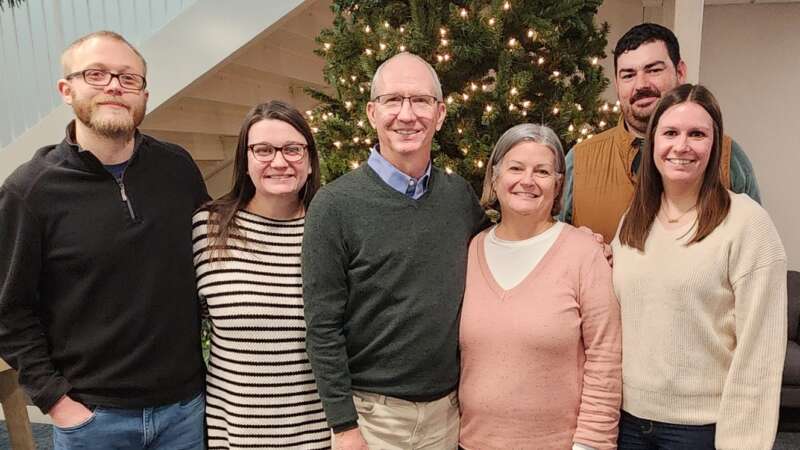What do you want to be when you grow up? To answer that, young people need to know about their options.
The College of Architecture, Planning and Design (APDesign) at Kansas State University is working to make sure K-12 students know about architecture, design and urban planning careers through an initiative currently focused in Kansas City and expanding soon to other areas.
The KC Metro Initiative is a philanthropically funded effort to attract students, especially from underrepresented communities, to the architecture and design fields and hopefully to K-State as students.
“Design matters to all, but perhaps the positive impact of design matters most to those who are often the least able to afford it,” said Tim de Noble, former dean of APDesign. “Sadly, so many communities, underserved and underrepresented, have the least design resources and capital invested in them. For those growing up in these communities, they very likely have not had design thinking modeled for them, have not seen the enriching potency of design applied to their environments.
“It pains me to drive through these communities and realize that so many — perhaps the next Michelangelo or the next David Adjaye or Zaha Hadid — will never have the chance to learn how they can make a difference in design,” de Noble said. “We want to make our college accessible to all, to raise future generations of designers from underrepresented and underserved communities, more often than not, but not limited to minorities, such that as graduates, they can lead the way in advancing all of society.”
Sumner Academy of Arts and Science in Kansas City, Kansas, is one of the schools partnering with APDesign faculty in this initiative. Giovanni Holguin, a junior at Sumner, appreciated having K-State faculty speak to his class. “When we think of architecture, the first thing that came to my mind were the aspects of the appearance of a building. But through the presentation, I was able to learn it’s more than that. Architecture goes beyond buildings. It also goes into the environment — recreational activities, parks, places to relax. That’s something that made me have an additional interest in it, being able to help others through architecture.”
Giovanni agrees with de Noble that having more people from underrepresented communities in design would be good for society.
“I would recommend younger students participate in this program,” Giovanni said. “I know that as a Hispanic, there is a lower representation among architects and engineers of Hispanic descent. This would open more opportunities to them and expand their horizons.”
Vibhavari Jani, associate professor of interior architecture and industrial design (IAID), led a part of the initiative that connected IAID graduate students with students at JC Harmon High School in Kansas City, Kansas.
“To assist these high school students in envisioning a better future for themselves, we developed a mentoring model wherein the university students mentored the high school students, helping them to understand the importance of higher education and the different career paths available to them,” Jani said.
“This initiative offered multiple opportunities for students from very different backgrounds to meet and work together collaboratively to solve a design problem,” Jani said. “For example, the high school students worked with IAID graduate students to envision 21st century teaching and learning environments for their high school and made conceptual models for renovation of their existing school.”
Similar partnerships have occurred with faculty in landscape architecture and architecture. All told, the Initiative has provided transportation to bring over a hundred students from Sumner Academy and JC Harmon High School to the K-State campus to explore the college environment. In the words of one JC Harmon students who visited, “I could see myself here.”
The KC Metro Initiative helps attract students to K-State and to APDesign. Another important aspect of the initiative is to help keep students in the college through financial support. The pandemic created financial difficulties for many students. The online classes required technology they may not have had, and the financial strains on their families may have meant dropping out.
Several APDesign students in the KC area received scholarships, which helped pay expenses so they could stay in school. One hundred percent of students who received a retention scholarship stayed in their professional program within the College of APDesign.
“Online classes added some unforeseen fees to my tuition, so I opted to work a part-time job to compensate for those, which made juggling both school and my job difficult at times,” said Avery Neer, a student in architecture. “The scholarship covered the full expenses of my computer that all students are required to have. I was also able to purchase software packages that I have been using in my classes. Without this scholarship, I would likely be unable to produce quality work, and completing remote class work would have been difficult.”
Because of the success seen in Kansas City, the anonymous donor supporting this initiative has agreed to add to the fund and remove all geographic restrictions. APDesign can use these resources to recruit and retain students from underrepresented groups and continue to provide an outstanding design education throughout the state and the nation.
“The experience of working with high school students in Kansas City gave me a deeper understanding of why education matters, why aspiration matters,” said Katie Kingery-Page, associate dean of APDesign. “The design and planning professions are all about connections to place, belonging and envisioning resilient futures. Seeing a high school student catch the spark that their own creative and critical thinking matters — seeing them realize they too could be the future designer or planner working with a community — that helps me fulfill K-State’s land-grant mission as a landscape architect and educator.”
To support APDesign or contribute to this initiative, contact Damon Fairchild at damonf@ksufoundation.org or 785-775-2086.




